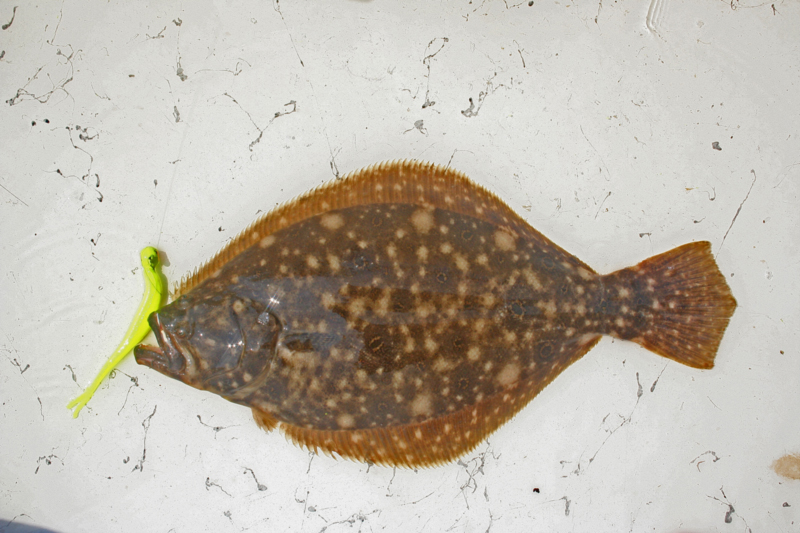Who goes flounder fishing in March? Almost no one… except for those who know better. Truth be told, however, the first early birds will appear in our coastal bays this month, usually by the second week of March. And although their numbers are thinner than they will be in April so are the crowds. You can catch them using many methods, but LT trolling over shallow flats is a killer — here’s how it’s done.

- Try to fish on days following a calm stretch, when turbidity is minimal. Flounder fishing the day after a big blow is usually fruitless.
- Rig up light fast-action rods with 12- to 15-pound braid and a two- to three-foot 15-pound fluoro leader, then tie on a half-ounce jighead with a three- to four-inch twister tail, Berkley Gulp!, or similar offering.
- Look for shallow flats in the three- to five-foot range with sandy bottoms and deeper channels nearby. If at all possible, try to time your trip to begin at the peak of a high tide so you fish through the outgoing tide (when sun-warmed waters are flowing out of the back-bays and marshes).
- Troll at absolutely minimal speed. One mph is not too slow, and 1.5 mph often is too fast. If the current is very strong, going with it will help keep your light jigs down near bottom. And if it’s blowing too hard to maintain a course this slow, it’s usually best to switch to drifting.
- Cast out and feel for bottom by sweeping the rod forward and then dropping the tip. If you don’t feel bottom drop back more line, and if you’re dragging, take some in.
- Troll as many lines as you like, but work as many as possible by constantly sweeping the tip forward, then dropping it back until the jig taps bottom again. Rods being worked will out-catch those that are static two to one.